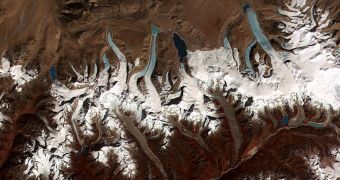Over recent years, scientists have devised a number of computer models in their attempt to decipher how changes in the atmosphere will influence human activities in some of the most populated areas of the world. Some of the most complex such models to date are those that have been created for heavy rainfall, but, according to a new study, it may be that they are incomplete, at least in some regards. The new work belongs to now (Netherlands Organization for Scientific Research) scientist Martin Ziegler, who has just received his doctorate from the Utrecht University, on October 2.
In his investigations, the expert looked at weather data spanning back for the last 800,000 years, and determined that North Atlantic iceberg meltdowns, as well as changes in the annual weather phenomenon El Nino (the Southern Oscillation), had a significant influence halfway around the planet, on the intensity of monsoon rains that batter southern Asia, ScienceDaily reports. For this conclusion, the expert analyzed numerous sedimentary deposits from all around the world.
Ziegler reveals that most climate models take into account things such as the constant, but slow, increase in solar radiation, or the gradual rise of carbon dioxide concentrations across the planet when making their predictions. However, the expert adds that this approach may be incomplete and may overlook significant amounts of data. He reveals that even things as minor as how the Earth wobbles on its axes may contribute to the overall effect recorded in the sediments, and that most models are incomplete because they do not take this sort of factors into account.
The new line of research, regardless of the fact that it questions established work, is very important for the future. In countries such as India, which are heavily dependent on the monsoon in order to produce sufficient products to feed the population, being able to forecast the amount of water that will fall within a certain time frame could mean the difference between life and death. Estimating the strength of the monsoon in advance could also result in less casualties being reported with each seasonal flood.

 14 DAY TRIAL //
14 DAY TRIAL //